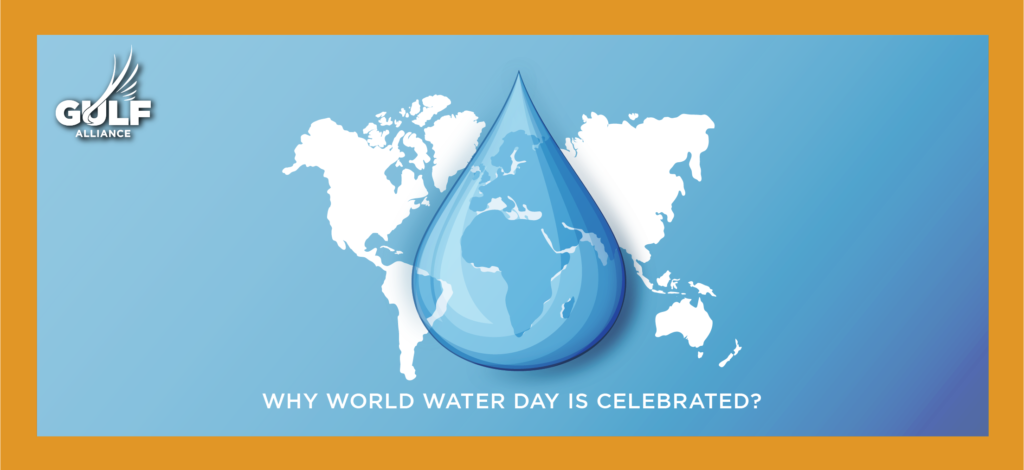Why do we celebrate Water Day?
To highlight the importance of freshwater. The celebration of World Water day is on 22 March every year. On December 22, 1992, as a component of Agenda 21,The World Water day celebration on 22nd March has been formally proposed by the United Nations Conference on Environmental Development . Thus, starting 1993,the celebration of this day is to advocate for the sustainable management of freshwater resources. Nearly all the United Nations member states and international organizations celebrate this day and dedicate it to making freshwater accessible for all.
It Discover Different theme Every year 22 March .The theme highlights the main issues in that particular year. Thus, the chosen theme also outlines the plan of action for concerned authorities. The theme for the year 2022 is, “Groundwater: Making the Invisible Visible”. Under this theme, it focuses on the importance of hidden water resources. The resources are yet to be fully recognized for an effective policymaking process, essential for the sustainable development of communities.
Importance of freshwater
Water has importance for almost all aspects of our personal life as well as our community as a whole. Being the most essential element, water is inevitably required for human existence and development. According to the World Wildlife Fund, almost 70% of water is on our planet. Out of 70% only 03% is freshwater. However, two-thirds of the 03% of the freshwater is in the form of glaciers.
Since most of the earth’s water is saline, therefore this freshwater is the only type of water that can be used for drinking purposes, irrigation of fields, and power generation. Even a larger quantity of fresh water is used for industrial use. Thus, the scarcity of fresh water can cause a severe setback to the development of a community.
Water Security
UN-Water defines water security as “The capacity of a population to safeguard sustainable access to adequate quantities of acceptable quality water for sustaining livelihoods, human well-being, and socio-economic development, for ensuring protection against water-borne pollution and water-related disasters, and for preserving ecosystems in a climate of peace and political stability.”
Thus, water security is the “sufficiency” of water as per the needs of the community. Many indices propose a different quantity of water availability that can be considered sufficient for a community’s water needs. However, the Falkenmark indicator is the widely used indicator to access the availability or scarcity of water in a region.
Falkenmark indicator identifies that the annually 4000m3 per person is the adequate supply of water. However, if the quantity of renewable water per year is 1,700m3 per person, then the region is experiencing water stress. When the quantity of renewable water is 1,000 m3 per person in a year, then the region is water-scare, and if it is below 500 m3 then the region is experiencing absolute water scarcity.
Depending on these falkenmark measurements, many regions are already declared as water-scarce. Since water can become a source of welfare or warfare. The water scarcity is making living difficult for many communities to survive in such precarious climate conditions. Therefore, to achieve water security, concerned international organizations and states are duty-bound to protect . And equitably manage available freshwater resources and ensure every individual’s access to safe water. And take concrete actions for the mitigation of water-related hazards, most commonly droughts and floods.
Causes of the water crisis
Despite its abundance, water has been a source of conflict and turmoil globally. Climate change has been the major contributing factor to the water crisis around the world. Changing climate patterns are causing scarcity of water and droughts in some regions, while floods in many others. Apart from the uncontrollable factors, increasing population and their water needs. Unattended freshwater that gets bony due to lack of water storage reservoirs. There is a list of controllable factors for water crisis weakness of governmental water management institutes.
Global water crisis
According to the United Nations Organization, 40% of the global population is currently facing water scarcity , and this situation continues to worsen. World Wildlife Fund predicts that by 2025, almost two-thirds of the population of the world may face water shortage. While 2.7 billion people experience water scarcity for at the very least one month in a year.
The water crisis in Pakistan
According to the International Monetary Fund (IMF), despite having the world’s largest glaciers, Pakistan is currently the 3rd most water-stressed country in the world. The per capita water availability is further dropping each year. While many rural, as well as urban communities in Pakistan, are facing water conflicts and tensions has already occurred between the provinces over water distribution. Therefore, there is a need for an integrated approach to the management of water resources and building water reservoirs.
Water crisis and Human Security Paradigm
To avoid water conflicts among communities, water management is critical. Since water has an interlinked impact on each aspect of community development, Examine the phenomenon of inter-relatedness of the water crisis and human security paradigm.
1. Water and food security
Freshwater availability is the most crucial element for ensuring food security in a region. The use of freshwater and wasted during irrigation of fields. The conventional methods of irrigation and lack of water reservoirs are the main reasons for freshwater wastage.
2. Water and health security
Thousands of people, and especially children, die as a result of water-borne diseases. Long-term droughts also give rise to higher mortality rates in water-vulnerable regions. Therefore, access to clean drinking water is essential for enhancing health security.
3. Water and personal security
From food security to safe drinking water, an individual’s personal security is highly dependent on the adequate supply of fresh water. Apart from water-borne diseases, it threats an individual’s personal security when the person is to migrate into another region due to water scarcity in their hometowns. Many reports suggest that in the next century, climate-induced migration will become frequent as compare to conflict-induced migration.
4. Water and community security
Due to the absence of proper water management and distribution mechanisms, communities fight for the equitable distribution of water. Such competition leads to conflicts and even armed conflicts in water-scare regions.
5. Water and economic security
Adequate availability of water is directly connected to economic development. Since agriculture, industries, and domestic consumption of water is inevitable, therefore scarcity of water can push a region towards under-development and poverty.
6. Water and environmental security
Proper management of water resources is important because its scarcity, as well as abundance, can create disturbance in the environmental patterns of a region. The effects of environmental security reflect in the prosperity and development of a region.
7. Water and political security
Since more people are becoming aware of the significance of water availability, they question their governments and leaders about their water conservation policies. Any political leader or party which fails to provide a clear framework on water infrastructure usually loses public trust.
Water and Sustainable Development Goals (SDGs)
Based on its wider significance and the prevailing degrees of the water crisis, the United Nations has added “Clean Water and Sanitation” as SDG number 06 to the Sustainable Development Goals (SDGs). SDGs are the Global Goals were adoptive through a resolution by the United Nations General Assembly and the UN member states in 2015, collectively known as Agenda 2030. Agenda 2030 is the universal call of action for the member states. Proposed through the 17 interlinked goals, to end poverty and discrimination, maintain peace, create sustainable community development, and protect the environment.
Under SDG 06, the importance of every individual’s access to clean water has been highlighted through eight targets measured by 11 indicators. According to the United Nations Organization, 3 out of 10 people lack access to safe drinking water. Furthermore, nearly 1000 children die every day because of preventable water diseases and sanitation-related diarrheal diseases. Therefore, with the help of SDGs, the United Nations provides a blueprint for a safe and prosperous future on planet earth.
Ending thoughts
With the presentation of SDGs, many international organizations and states have explicit their concern over the globally prevailing water crisis. International organizations are playing a responsible role in spreading awareness regarding the efficient management of freshwater resources on a global level. Many states are taking and have taken concrete actions to build water reservoirs to prevent the drainage of fresh water into oceans.
Since these efforts are promising, then we can see the future free of water scarcity. However, being citizens, we have a prime responsibility of saving water for future generations. We should not waste water during household chores, irrigate fields using drip irrigation and other modern irrigation practices. And limit the commercial usage of freshwater.


